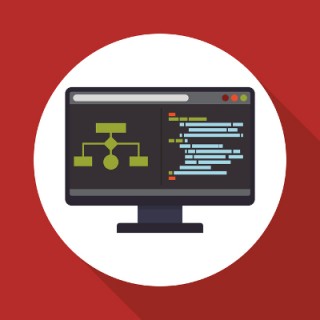It’s not an understatement to suggest that hackers are a hindrance to business. They take what doesn’t belong to them, and worse than that, they use that stolen information to make off with money, misrepresent individual actions, and ultimately, just cause a degree of added entropy that any business simply doesn’t need. Recently, with the hacker group Anonymous consistently in the news and dozens of corporate hacks resulting in millions of people’s personal information being compromised, hackers have been an increased part of the public consciousness.
Infradapt Blog
Data backup is foundational to every business continuity plan. Despite this, many businesses don’t realize that data backup and disaster recovery are two very different solutions. This oversight could leave a company high and dry in the face of a disaster causing data loss.
To help clear things up, let’s dispel three myths that many have about data backup and disaster recovery.
Myth #1: Having Multiple Copies Guarantees Successful Backups
While it’s true that it’s a best practice to store multiple copies of your data throughout your IT infrastructure, this practice doesn’t necessarily guarantee that your backups will work properly when you need them. Typically, organizations will store one backup in-house, while another copy is sent to a secure, off-site location, typically in the cloud. The idea here is to have at least one backup completely separate from your in-house network, should anything disastrous happen to it. However, in addition to taking multiple backups, you need to routinely check to see if these backups actually work, seeing as they could still be susceptible to user error or data corruption. Therefore, make it a habit to test your backups, or have an outsourced provider do it for you.
Myth #2: Data that’s Frequently Backed Up Can Be Restored From its Original
If your data is only partially wiped out, then it usually can’t be restored from the original. Plus, rebuilding data from scratch is too time-consuming and expensive to be considered as a viable option. For example, think about how long it would take to reaccumulate all of the data stored on your company’s IT infrastructure--an impossibility for most organizations. Instead, having complete backups on hand ensures that you’ll overcome any disaster.
Myth #3: Data Backup and Disaster Recovery are One and the Same
At the core of this problem is the fact that many people don’t understand the differences between data backup and disaster recovery. Rather, they’re two equally critical parts of the same concept: business continuity; i.e., you can’t have one without the other. To be clear:
Data backup is the process of taking the backup itself, while disaster recovery is when these backups are recovered.
To further explain these differences: data backup represents a figure called the recovery point objective (RPO), which is how much data needs to be recovered in order to keep operations moving forward. Whereas disaster recovery makes use of RTO, (recovery time objective), which factors in how long this process takes.
To be clear, your business continuity plan must include both RPO and RTO. The best way to go about this for your business is to implement a backup and disaster recovery (BDR) solution. A BDR from Infradapt can help your organization get the most out of data backup by providing you with an enterprise-level solution designed to optimize uptime and efficiency.
BDR takes backups of your data as often as every fifteen minutes, making it exceptional for keeping your data up-to-date and functional. These backups are taken automatically and are sent to both the cloud and a secure, compliant off-site data center for storage. This gives you the option to restore your data remotely, directly to the BDR device, in the event of a disaster. Plus, the BDR can take the place of your server while you work to resolve the disaster.
If you’d like more information concerning BDR and business continuity, our trusted experts would be happy to consult you. To learn more, reach out to us at 800.394.2301.
When an organization implements new software solutions, they are usually trying to either replace deprecated applications or find a solution to a particular problem. These solutions are often implemented without regards to the older software, and they’ll just collect dust on the network until someone decides to remove them. These unnecessary apps could be wasting precious time and resources for your business. In fact, up to 38 percent of enterprise applications aren’t being used on business networks.
In more specific terms, 30 percent of applications went unused, while only eight percent were used infrequently--less than once a month. A recent study by 1E claims that between the United States and United Kingdom, $34 billion is lost every year on unused or rarely used software solutions. Furthermore, the typical large enterprise could lose up to $7.4 million every year on unnecessary software solutions. While it must be mentioned that small companies won’t waste nearly this much, it’s still important to realize wasted resources when you see them. Software licenses aren’t cheap, and if they’re set to automatically renew, you could be wasting plenty of assets on software that you don’t even use.
Granted, it’s easier said than done to discover which applications your business uses, and those which it doesn’t. Unless you have an internal IT department that manages your organization’s technical assets, you could accidentally be renewing software solutions for apps which you barely use at all. Thus, it’s your responsibility to put a stop to it, and soon.
Through a comprehensive network audit, you can find ways to improve your infrastructure, be it identifying bottlenecks or discovering resources allocated toward apps that you don’t use or need. If your network is chock-full of unused and unnecessary applications, you can use a network audit to discover where they are and to jumpstart your network cleanup procedure.
Infradapt can perform a network audit that takes a comprehensive look at your IT infrastructure and identifies weaknesses that can be shored up. For example, it can identify bottlenecks or unnecessary resource allocation that can help you streamline operations. Furthermore, we can introduce you to new and improved solutions that can completely replace or consolidate your current assets into a more budget-friendly option.
It’s also necessary to mention that you should only be paying for software licensing on solutions that you actually use, and to keep tabs on when licenses expire. It’s usually better to pay as you need them, as something could come up and completely replace it somewhere down the line. If you outsource remote monitoring and maintenance through Infradapt, we can keep an eye on your network in real time and automatically issue updates to your software solutions as they are released. Furthermore, we can act as a single point of contact for your software vendors, so you only have to go through us to renew your software licenses. This takes away the pain of contacting multiple software vendors, which can be a time-consuming and downright annoying process.
To learn more about network audits, remote monitoring and maintenance, or vendor management, reach out to us at 800.394.2301.
The last time you reached out to IT support, how long did it take them to respond to your request? Did they have to drive all the way to your office, only to resolve the issue far too late? Being able to take prompt action is key to alleviating IT issues, especially when mission-critical data is on the line. A remote monitoring and maintenance solution may be just the tool you need to keep your systems maintained and operating properly, and all without expensive on-site visits.
Remote monitoring and maintenance lets your business get the technology assistance it needs as swiftly as possible. It’s usually more efficient to outsource this responsibility to a third party that can keep tabs on your business’s systems through an online cloud-connected interface. This allows technicians to resolve most problems without an on-site visit, though this is far from the only benefit that remote monitoring and management solutions provide.
Resource Allocation
Your network components and applications are constantly being accessed throughout the workday, but delegating the proper amount of resources to ensure that the tools are available can be tricky business. If you have an outsourced provider monitoring your network resources, they can adjust the workload to avoid bottlenecks and downtime, ensuring maximum functionality.
Threat Management
Similar to the above point, keeping an eye on the network and its resources can signify when a threat slips through your defenses. If a virus or malware program installs on a device, it may slow down the machine and spread to other parts of your infrastructure. Identifying where a threat is and eliminating it promptly is important to keep infections from spreading, and this same tactic can be used to detect telltale signs of hardware failures so your organization can prepare for the worst.
Patching and Security Updates
One of the best things about remote monitoring and maintenance is that the outsourced provider can remotely apply patches and updates, as well as resolve other problems that might come up. By doing this, you effectively free your business from the responsibility of performing this routine maintenance, which is an invaluable opportunity for an SMB to invest in more profitable endeavors.
Of course, the biggest benefit of remote monitoring is the fact that you’ll cut down on expensive on-site visits from your IT support. Since most problems can be resolved remotely, it’s logical that you avoid on-site visits as much as possible. After all, it’s a mutually beneficial situation; you get the help you need, and we help you save money. Of course, there are always going to be issues that need an on-site visit, but we’ll try to limit these so that you can focus on keeping your business productive.
To learn more about remote monitoring and management, reach out to us at 800.394.2301.
While the explosion of technological advancement has been great for business, it’s become more challenging than ever before to keep sensitive information safe--even if all you use is an Internet connection. Even small healthcare offices are feeling the effects of this proliferation of threats and malware as they struggle to keep their organizations secure and compliant with government agencies.




